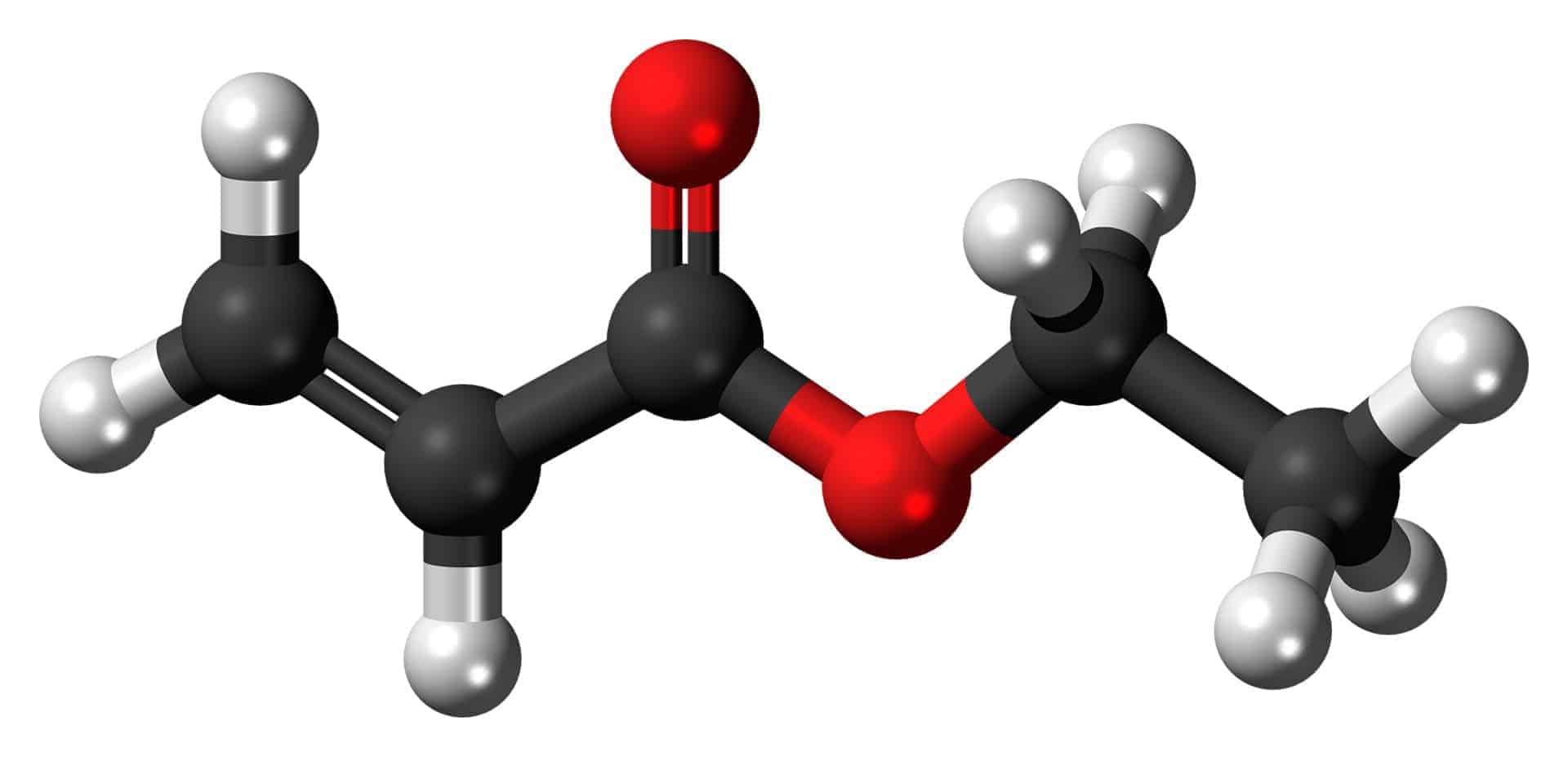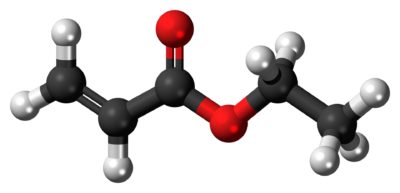Did You Know That Acrylates Are “Easy-Cleans”?

Did you know that tanks that have been used to carry acrylic polymers and latexes are often cleaned with caustic and steam? Many acrylates are chemical compounds known as ESTERS. Esters are the reaction product of an organic acid (acrylic acid) and an alcohol such as ethanol or methanol. Common esters include substances such as fingernail polish remover (ethyl acetate) and vegetable oils (fatty acid esters of glycerine, aka glycerides). Many flavors and fragrances are esters as well. One of the common traits of esters is that they can react with water (in the presence of acid or base) and regenerate the starting acid and alcohol. This is a process known as HYDROLYSIS. In a basic solution (such as a caustic solution), the acid reacts with the base and forms a salt. Using base (or alkali) to hydrolyze an ester is called SAPONIFICATION and is the process used to make soap.
As stated, many acrylates are esters. When treated with caustic, they saponify and form the acrylate salt and the starting alcohol. Alkaline salts of acrylic acid (and polymers) are water soluble, so the polymers become water soluble are are easily removed. Temperature accelerates the process (as a rule of thumb, an increase of 18°F doubles the rate of reaction) and shortens the cleaning time.
The reaction between caustic and acrylates releases the starting alcohols, some of which can be quite odorous. That is why fogging a tank with John-Henry GAMMA NEBULA® after cleaning is recommended. It neutralizes the odor of the alcohol (and any residual monomer) and prepares the tanks for the next load.
¿Sabía usted que los tanques que han sido utilizados para transportar polímeros acrílicos y látex son a veces limpiados con cáusticos y vapor? Muchos acrilatos son compuestos químicos conocidos como ÉSTERES. Los ésteres son producto de la reacción de un ácido órganico (ácido acrílico) y un alcohol como el metanol o etanol. Los ésteres comunes incluyen sustancias como el removedor de barniz de uñas (acetato de etil) y aceites vegetales (ésteres de ácidos grasos de glicerina, o glicéridos). Muchos sabores artificiales y fragancias son también ésteres. Uno de los rasgos comunes de los ésteres es que pueden reaccionar con el agua (en presencia de ácido o base) y regenerar el ácido y alcohol primarios. Este proceso se llama HIDRÓLISIS. En una solución básica (como la solución caustica), el ácido reacciona con la base y forma una sal. Utilizar una base (o álcali) para hidrolizar un éster es conocido como SAPONIFICACIÓN, y es el proceso utilizado para fabricar jabón.
Como se dijo anteriormente, muchos acrilatos son ésteres. Cuando son tratados con cáusticos, éstos se saponifican y forman la sal de acrilato y el alcohol inicial. Las sales alcalinas de ácido acrílico (y polímeros) son solubles en agua, de manera que los polímeros se convierten en soluble en agua y son fácilmente removidos. La temperatura acelera el proceso (como regla aceptada, un incremento de 18ºF dobla la tasa de reacción) y acorta el tiempo de limpieza.
La reacción entre un cáustico y un acrilato libera los alcoholes primarios, algunos de los cuales pueden ser bastante olorosos. Es por esto que se recomienda nebulizar un tanque con John-Henry GAMMA NEBULA® luego de la limpieza. Esto neutraliza el olor del alcohol (y de cualquier monómero residual) y prepara el tanque para la siguiente carga.

